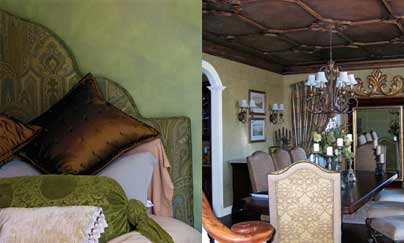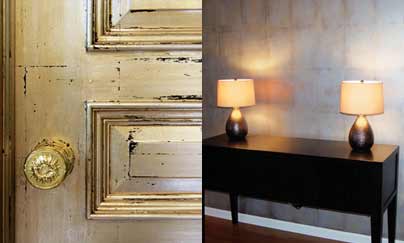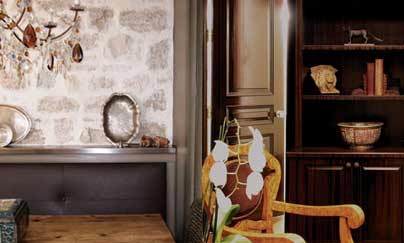Faux fabulous paint techniques
The '80s ruined faux. The decade that gave us big hair and acid-washed jeans also introduced sponge-painting and marbleising kits to the masses. Suddenly, amateurs started taking a Renaissance-era art technique and applying it to everything from stereo cabinets to kitchen walls. The result? A bad reputation!
The do and don't of faux finishes
DO Use faux to solve otherwise expensive design problems. If you want to replace wood mouldings with stone, think about the more affordable options; faux stone is much less expensive.
DO Get the wallpaper look without compromising on a thing. Sure, you can get a damask patterned wallpaper, but if the pattern doesn't come in the colours you want, or it's not quite the scale you had in mind, then what are you going to do? Do it yourself!.
DO Use a faux grass-cloth treatment to add texture and subtle colour to a neutral-toned room that might otherwise feel boring. Not only will it likely cost you less than cloth wallpaper, you won't have any of those unseemly seams.
DO Disguise flaws in old plaster walls but retain their worn-with-age charm with soft expanses of colourwashing.
DON'T Assume that faux finishes are only for traditional homes. They can also work just as well in modern settings.
DON'T Put metallic finishes in bathrooms that get a lot of use. While faux finishes can be as durable and washable - too much moisture can oxidise and alter the colour.
DON'T Ignore what's going on in adjacent rooms. If the dining room has a deep red glaze, you don't want the rooms right next to it to have a [dramatic] faux finish, rather opt for a metallic finish that's soft, subtle, and atmospheric in one room, and in the next use a more striking effect on a ceiling, focal wall, or niche.
DON'T Get overconfident about doing projects-especially big ones-yourself. Just taking a one-hour class is not enough. As the saying goes... "Practice makes perfect!" Hone your talents on smaller projects before tackling the bigger ones.
chicago home magazine
IMAGES: TOP: Glazing adds a luxe touch to a bedroom: A ceiling gets a lift with a glaze: MIDDLE: This antiqued door fits perfectly in a restored home: Metallic paint in a blocked design enlivens an entryway. BOTTOM: Faux distressed wood cabinets and limestone finish over a real stone wall gives this kitchen a rich, rustic look: Faux bois creates the wood look for less.
Get to know the lingo
Glazing
Glazing is the broadest, encompassing dozens of techniques. What they all have in common is the application of layers of translucent colour that are then manipulated in some way.
Striae
Pulling glaze vertically or horizontally to create a lined effect, like grass cloth
Linen or chambray
Doing striae in both a vertical and a horizontal direction, giving the look of woven fabric
Colour washing
Applying glaze to a surface with a sponge or cloth to create softly mottled colour
Antiquing
Distressing a glazed finish to make it look old
Marbleizing
Creating the look of marble
Faux bois or wood graining
Mimicking the appearance of wood grain
Gilding
Applying ultra-thin layers of metal leafing, typically gold or silver, to a surface. A less lustrous but also less expensive effect can be achieved by using metallic paints or metallic powders mixed with paint.
Plasters
Involve applying layers of plaster with a trowel or knife, with an effect ranging from chunky to smooth. Shiny Venetian plasters, created with thin layers and burnished to look like polished stone, have become extremely popular.



